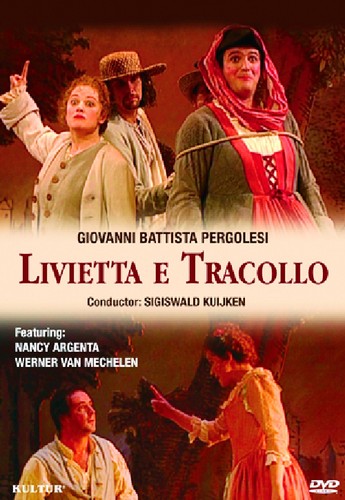Show results for
Explore
In Stock
Artists
Actors
Authors
Format
Theme
Genre
Rated
Studio
Specialty
Decades
Size
Color
Deals
- 4K Ultra HD Sale
- 50s Films Sale
- Action Sale
- Alternative Rock Sale
- Anime sale
- Award Winners Sale
- Bear Family Sale
- Blu ray Sale
- Blues on Sale
- British Sale
- Christmas in July
- Classical Music Sale
- Comedy Music Sale
- Comedy Sale
- Country Sale
- Criterion Sale
- Electronic Music sale
- Folk Music Sale
- Horror Sci fi Sale
- Kids and Family Sale
- Metal Sale
- Music Video Sale
- Musicals on Sale
- Mystery Sale
- Naxos Label Sale
- Page to Screen Sale
- Paramount Sale
- Rap and Hip Hop Sale
- Reggae Sale
- Rock
- Rock and Pop Sale
- Rock Legends
- Soul Music Sale
- TV Sale
- Vinyl on Sale
- War Films and Westerns on Sale

Livietta E Tracollo
- Format: DVD
- Rated NR
- Release Date: 5/31/2011

Livietta E Tracollo
- Format: DVD
- Rated NR
- Release Date: 5/31/2011
- Starring: Enrico Maggi, Marie Kuijken, Nancy Argenta, Werner van Mechelen
- UPC: 032031454897
- Item #: KLT145489
- Director: Donato di Stefano
- Rated: NR
- Genre: Classical, Opera/Operetta
- Release Date: 5/31/2011
- This product is a special order
- Closed Caption: No
- Original Year: 2011
- Distributor/Studio: Kultur Video

Product Notes
The Intermezzi (interludes) presented here were premiered in combination with Giovanni Battista Pergolesi's opera "Adriano in Siria" on the occasion of the festivities for the birthday of Queen Elizabeth of Spain in 1734 at the Teatro San Bartolo in Naples. As was customary, the first intermezzo was given after the first act and the second intermezzo after the second act of the opera. The intermezzi had no connection with the plot of the opera seria, nor did the same singers perform. Dressed as a French peasant boy, Livietta, with her friend Fluvia, plans to lure Tracollo into a trap and punish him because he has robbed Livietta's brother and almost killed him. As Tracollo and his servant Faccenda, disguised as a pregnant Polish woman and a beggar, approach the women, Livietta pretends to be just waking up. She catches Tracollo trying to steal Fulvia's jewelry. Livietta reveals herself and is determined to have Tracollo arrested, whereupon he pleads for mercy. He attempts to calm Livietta down and promises to marry her. Although this is Livietta's greatest wish, she turns him down. Tracollo has disguised himself as an astrologer and pretends to be deranged in order to soften Livietta's heart after all. To test his supposed unsoundness of mind, Livietta acts the part of one who will soon die. Tracollo proves to be very concerned at this new set of circumstances; he stirs Livietta in such a way, that she leaves off all deception. Both swear to marry, swear eternal love and faithfulness. "Livietta and Tracollo" counts among the most popular intermezzi of the 18th century and was performed on numerous Italian stages and in other European countries for over 20 years. The production of the Intermezzo, adapted in 1963 by Wolf Ebermann and Manfred Koerth, formed the basis for the performances at the Chamber Opera Vienna (1975), the Schwetzinger Festival (1978) and at the Berlin Chamber Opera (1985).
Credits
-
CreditsEnrico Maggi
Marie Kuijken
Nancy Argenta
Werner van Mechelen
-
DirectorsDonato di Stefano

